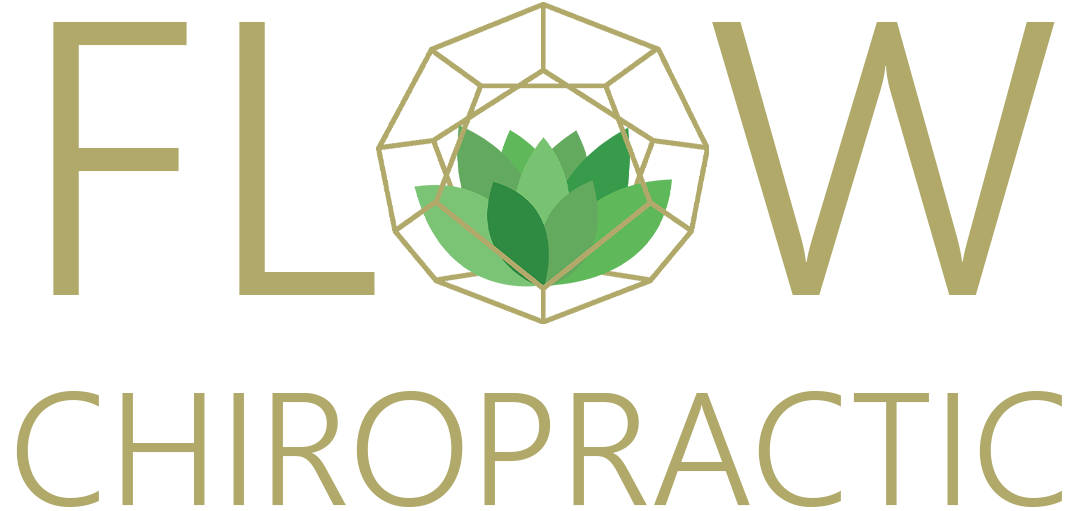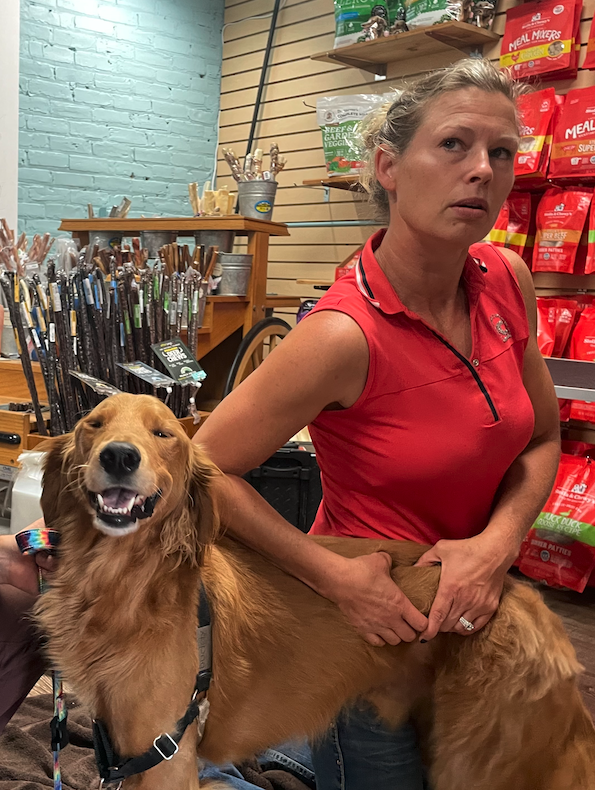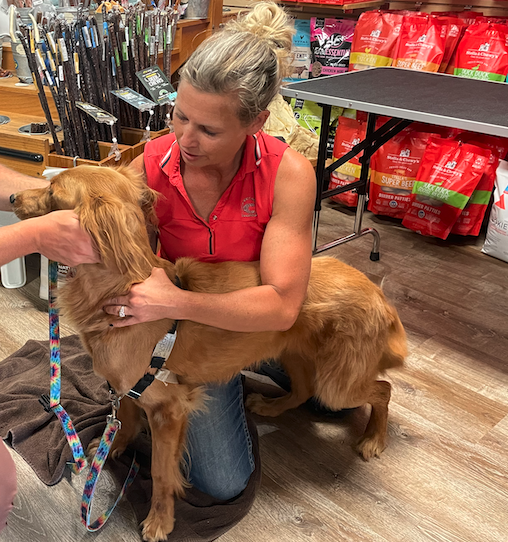Roubaix and Buddy go to the Chiropractor
Chiropractic Care for Dogs: A Holistic Approach to Canine Health
Our animal companions are more than just pets; they are beloved members of our families. This is especially true when these animal companions are two Golden Retrievers named Roubaix-Salsa and Buddy-Waffles. Just like humans, animals can suffer from a variety of health issues, and as responsible pet owners, we strive to provide them with the best care possible. Golden Retrievers are a breed known for wearing out their hips as they age. Along with maintaining a healthy weight, providing ample opportunity for exercise, and supporting their nutrition with sardines and probiotics, we were curious to add Chiropractic into the mix. As chiropractors ourselves, this seemed like a natural conclusion once we found the right person to take care of our babies. We were so excited to find out a colleague of ours, Dr. Stacey Fischer, was moving to exclusively working with animals under the name, 4-Legged Chiropractic. Chiropractic care for animals is an increasingly popular and effective method of maintaining their overall well-being and addressing musculoskeletal problems. In this blog post, we will delve into the world of chiropractic care for animals, exploring its benefits, applications, and how it can contribute to enhancing the lives of our four-legged friends. I will also share more about our experience!
Who can perform Chiropractic for animals:
Doctors of Chiropractic (DC) and Doctors of Veterinary Medicine (DVM) can take additional training to become certified in veterinary chiropractic. In North America, this certification is through the Animal Chiropractic Certification Commission (ACCC) of the American Veterinary Chiropractic Association (AVCA). You are eligible to sit for the certification exam after completing one of the eligible training programs which are over 200 hours of course work between lecture and laboratory content. You must then re-certify every 3 years and complete 30 hours of continuing education.
Each state in different, but in Michigan, Chiropractors are able to provide this service as long as they are in contact with Veterinarians. If you are looking for a chiropractic care for your animal, you can search HERE.
Understanding Chiropractic Care for Animals:
Chiropractic care for animals focuses on the manipulation and adjustment of the spine and musculoskeletal system. This non-invasive and drug-free therapy aims to promote natural healing and enhance the nervous system's functioning. This is an especially useful tools for animals who cannot tolerate surgery or whose owners want to avoid surgery for financial or other health reasons.
We see the benefits of Chiropractic care everyday in the office working on humans who are bipedal (walking on two legs). Animals such as horses and dogs who who are quadruped (walking on four legs) also have stress on their spines but it is inherently different. These differences arise due to variations in posture, biomechanics, and load distribution between the two types of locomotion.
Here are some key differences:
Posture and Alignment:
Quadrupeds typically have a horizontal spine alignment. Their spines are parallel to the ground.
Bipedal animals, including humans, have a vertical spine alignment. This alignment concentrates the majority of the force through one vertical axis.
Weight Distribution:
In quadrupeds, the weight is distributed more evenly among all four limbs and the spine, which can help reduce stress on individual spinal segments. Quadrupeds can have more stress through their mid back due to the effects of gravity.
Bipeds place a significant portion of their body weight on the spine, especially the lower back, which is the most common area for degenerative or injuries to the intervertebral disc.
Muscle Engagement:
Quadrupeds utilize a more balanced and distributed muscle engagement across all four limbs to support their bodies and maintain stability.
Bipeds rely heavily on the muscles in their lower back and core to support the upright posture. This can put more strain on the lower back muscles and the spinal discs.
Impact and Shock Absorption:
Quadrupeds often rely on their limbs to absorb impact and shocks from movements like running and jumping.
Bipeds, especially humans, use an S-shaped curve in their spine to aid in shock absorption during activities like walking and running. However, this can also make certain spinal segments more susceptible to stress such as the base of the neck or where the low back meets the pelvis.
Curvature of the Spine:
Quadrupeds may have different spinal curvatures compared to bipeds. For example, many quadrupeds have a more pronounced thoracic curve, while humans have a more pronounced lumbar curve.
Benefits of Chiropractic Care for Animals:
Chiropractic care for animals takes into account the differences due to the orientation of the spine. Chiropractic care is not just limited to dogs and horses! Any animal with a spine can benefit.
Benefits include:
1. Pain Management: Animals can experience discomfort and pain due to various factors such as injuries, arthritis, or age-related conditions. Chiropractic adjustments can alleviate pain by reducing pressure on nerves and restoring proper joint alignment.
2. Improved Mobility: A properly aligned musculoskeletal system enables animals to move more freely and comfortably. Chiropractic care can enhance mobility and flexibility, benefiting animals of all ages, from young and active critters to seniors with mobility issues.
3. Enhanced Nervous System Function: The spine plays a crucial role in facilitating communication between the brain and the rest of the body through the nervous system. When misalignments occur, nerve signals can be disrupted, leading to various health problems. Chiropractic adjustments aim to restore nerve function, positively impacting overall health. Non musculoskeletal things you may notice as a results of Chiropractic are improved bowel and bladder habits and a calmer or more energetic disposition depending on the animal.
4. Complementary to Veterinary Treatments: Chiropractic care is often used in conjunction with traditional veterinary medicine. It can complement treatments such as surgery or medication, providing a holistic approach to canine health.
Item #4 highlights a conversation we had with Dr. Stacey. She became very involved with a dachshund rescue as these dogs are notorious for spinal problems due to their long torso compared to short legs. Many of the owners of these dogs did not want their animal to go through surgery and they were looking for alternatives. Between recommending natural anti-inflammatories such as herbs like Turmeric or homeopathic remedies such as Arnica and Chiropractic care, she was able to provide these dogs with a surgery free improvement in quality of life!
Our Chiropractic Session
We met at Must Love Dogs in Grand Haven during a clinic that Dr. Stacey was hosting. During our appointment for Roubaix and Buddy, Dr. Stacey performed a thorough examination of their musculoskeletal systems. She watched their gait when we came in, assessed their posture through their spine, and range of motion through the joints including the legs and jaw.
She told us that when she manipulates sore spots, the dogs may turn around and look at her and she was right! It was interesting to see their response to the various maneuvers she used. The key to that is that they never seemed to be in pain or scared at any time. Well, except Roubaix, and that is only because she gets nervous when she meets new people!
Each adjustment took less than 10 minutes and we had very relaxed dogs when we got home! They didn’t seem sore at all and were back to their normal active selves the next day. Dr. Stacey noted that the more sore a dog seems, the more treatments they may require. Otherwise, every 6 months was the recommended follow up schedule.
As a functional medicine doctor as well, we had a great time discussing some natural options to support Buddy’s sensitive skin due to allergies. We have tried medications and injections and nothing seems to cut it. I am looking forward to trying some of the anti-inflammatory / anti-histamine approaches she suggested which are things that I use on my human patients!
After our visit, we treated the dogs to a walk along the channel and a pup cup at Temptations. Chiropractic adjustments are really the best when followed up with ice cream!












